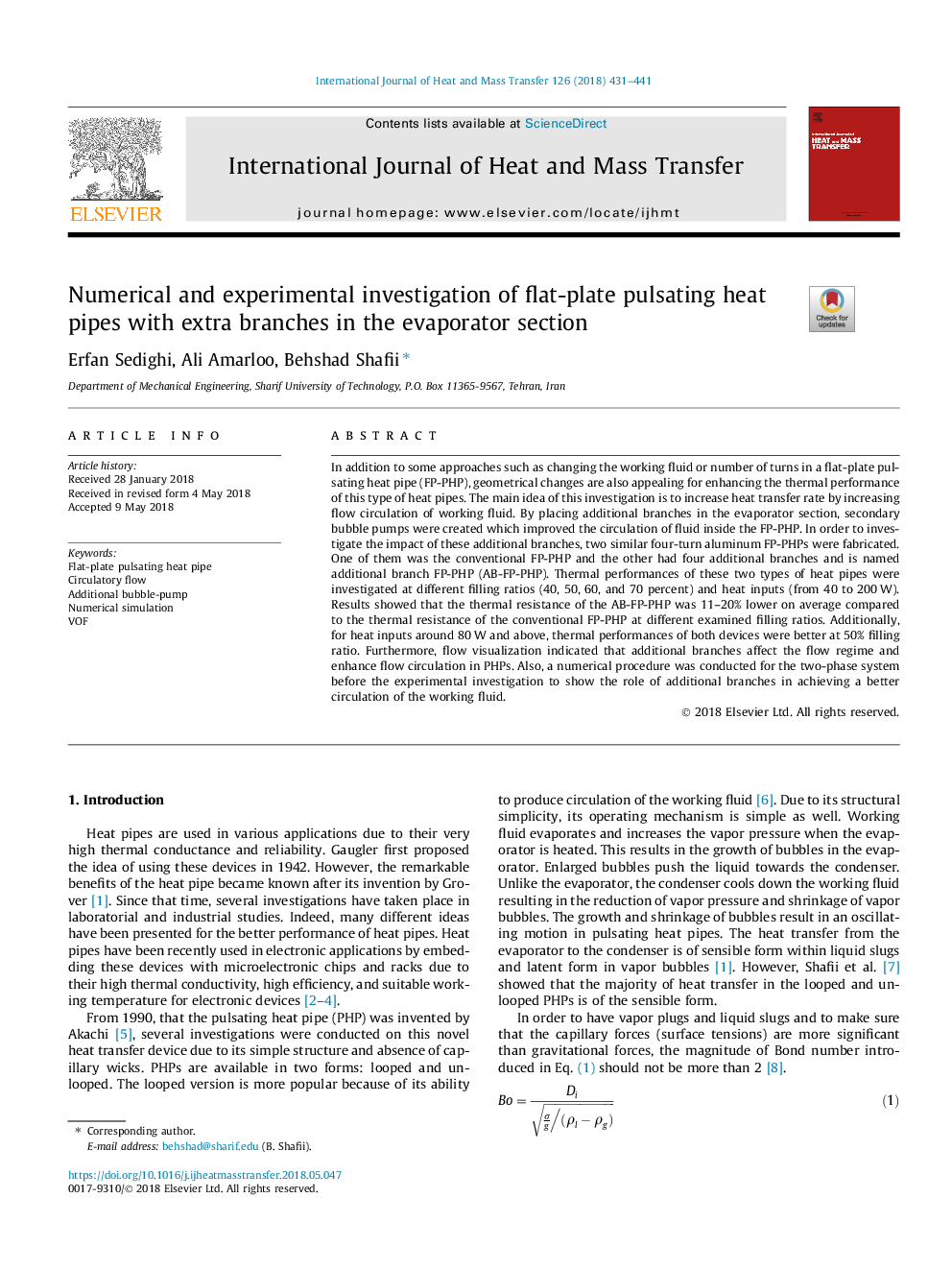| Article ID | Journal | Published Year | Pages | File Type |
|---|---|---|---|---|
| 7053981 | International Journal of Heat and Mass Transfer | 2018 | 11 Pages |
Abstract
In addition to some approaches such as changing the working fluid or number of turns in a flat-plate pulsating heat pipe (FP-PHP), geometrical changes are also appealing for enhancing the thermal performance of this type of heat pipes. The main idea of this investigation is to increase heat transfer rate by increasing flow circulation of working fluid. By placing additional branches in the evaporator section, secondary bubble pumps were created which improved the circulation of fluid inside the FP-PHP. In order to investigate the impact of these additional branches, two similar four-turn aluminum FP-PHPs were fabricated. One of them was the conventional FP-PHP and the other had four additional branches and is named additional branch FP-PHP (AB-FP-PHP). Thermal performances of these two types of heat pipes were investigated at different filling ratios (40, 50, 60, and 70 percent) and heat inputs (from 40 to 200â¯W). Results showed that the thermal resistance of the AB-FP-PHP was 11-20% lower on average compared to the thermal resistance of the conventional FP-PHP at different examined filling ratios. Additionally, for heat inputs around 80â¯W and above, thermal performances of both devices were better at 50% filling ratio. Furthermore, flow visualization indicated that additional branches affect the flow regime and enhance flow circulation in PHPs. Also, a numerical procedure was conducted for the two-phase system before the experimental investigation to show the role of additional branches in achieving a better circulation of the working fluid.
Keywords
Related Topics
Physical Sciences and Engineering
Chemical Engineering
Fluid Flow and Transfer Processes
Authors
Erfan Sedighi, Ali Amarloo, Behshad Shafii,
